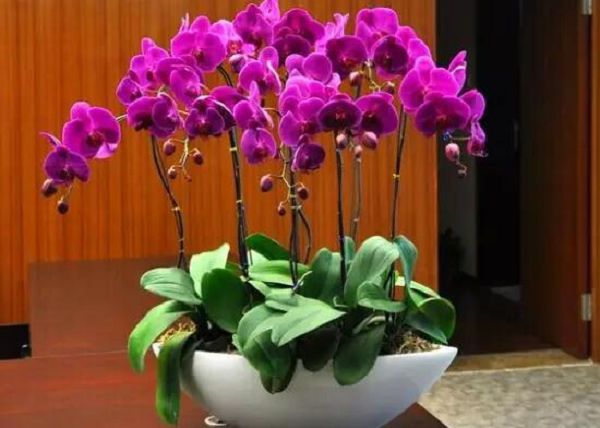How to grow orchids more exuberantly

To make orchids grow better and more vigorous, we generally need to meet the reasonable needs of orchids in five aspects: soil, fertilizer, light, moisture and temperature. There are also many small details, such as a well-ventilated environment, that will also promote the growth of orchids.
As one of the ten famous flowers, how can orchids be raised better and more vigorous? Our soil is the primary factor, water, fertilizer, light and temperature are necessary conditions. So what do we have to do to maximize the growth needs of orchids? Today, Flower Valley will introduce to you how orchids can flourish.
1. Soil conditions
Orchid is a very fertile plant, growing in a rich amount of humus, good ventilation, good drainage in the slightly acidic soil environment grow well.
Therefore, we can prepare some suitable soil ourselves to maintain orchids. Flower Valley suggests that you can use fertile garden soil (vegetable garden soil, orchard soil, pastoral soil, etc.), rotten leaf soil, red brick particles, river sand, and dried animal manure to configure orchid cultivation soil in a 2:1:1:1 mixture.
This soil is characterized by sufficient nutrients and good continuous fertilizer efficiency, porosity, excellent permeability, not easy to harden and other characteristics. So it's very good for orchids.
2. Nutrient conditions
Although we have prepared good soil for orchid cultivation, it is obvious that there is still a shortage of nutrients for long-term growth of orchids. At this point, we need all kinds of artificial nutrients supplement. We can buy orchids fertilizer directly, or refer to the method described below.
Orchids grow all year round, and we need to fertilize them with nitrogen-rich fertilizer once they have just sprouted. After that, there will be a lot of leaves, and we can apply nitrogen fertilizer again every month or so. The time of nitrogen application is between May and the beginning of autumn. The best time to fertilize is around 4 p.m.
After the beginning of autumn, orchids enter reproductive growth period. We can apply some phosphorus and potassium fertilizer to orchids every half month to about a month. This time can generally last until May of the following year, more specifically we can observe the growth of orchids to decide whether to fertilize.
3. Light conditions
Orchids love shade and fear direct sunlight. So we grow orchids in shade when the sun is too strong in summer and autumn. Winter and spring season, the light is not very strong, we can let it properly bask in the sun, this time generally has five or six hours on it. If we put it on the windowsill and other places, we need to turn the pot regularly to prevent the orchid growth direction from shifting and affecting the viewing effect.
4. Water conditions
I don't know if you know it, there is such a saying as "dry orchid wet chrysanthemum". It means that orchids can grow dry, but don't be too wet. Flower Valley recommends that everyone control in eight minutes dry, two minutes wet is appropriate, this is also the orchid breeding gardener in the long-term experience summed up the best dry and wet degree. This moisture level allows the orchid to meet its moisture needs without causing too much moisture to trigger bad growth.
5. Temperature conditions
Because of the variety of orchids, each variety has different temperature requirements. We concluded that the most suitable growth temperature for orchids is about 18~30℃. This is also a relatively broad temperature. If we can control the temperature within this range, then the orchid will grow relatively well.
Related
- Is the orchid suitable for indoor use? Is it good for the body?
- How to prevent the empty root of orchids?
- What to do after the crab claw orchid is withered?
- Why are the leaves of orchids always yellow? Fertilizing and watering.
- Can the root of the gentleman orchid be saved if it is rotten?
- Diagnosis and treatment of cotton-blowing beetle insects in Cymbidium
- There is a way for a gentleman's orchid to rot.
- What is the most suitable temperature and humidity for the orchid?
- How to raise a gentleman's orchid? Cultivation techniques of Cymbidium
- How to prepare the nutritive soil for the cultivation of Cymbidium



